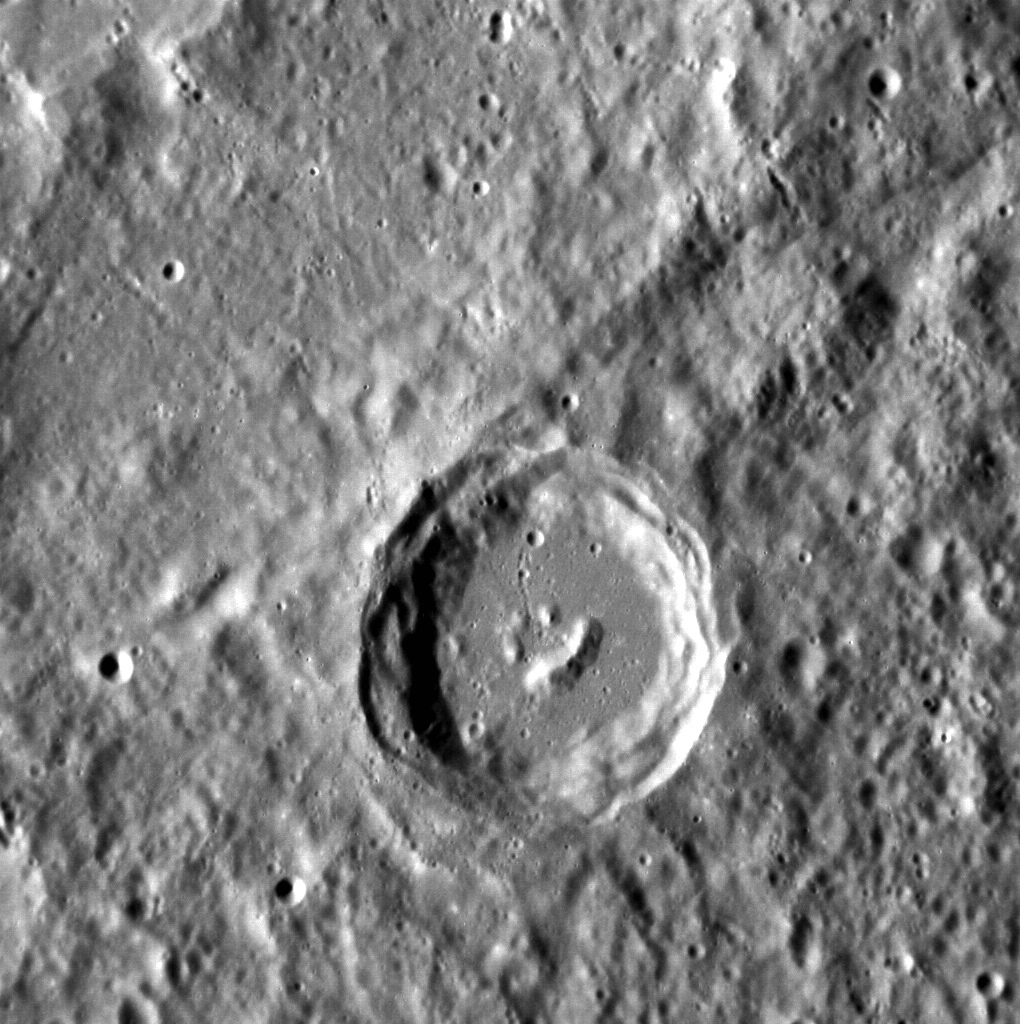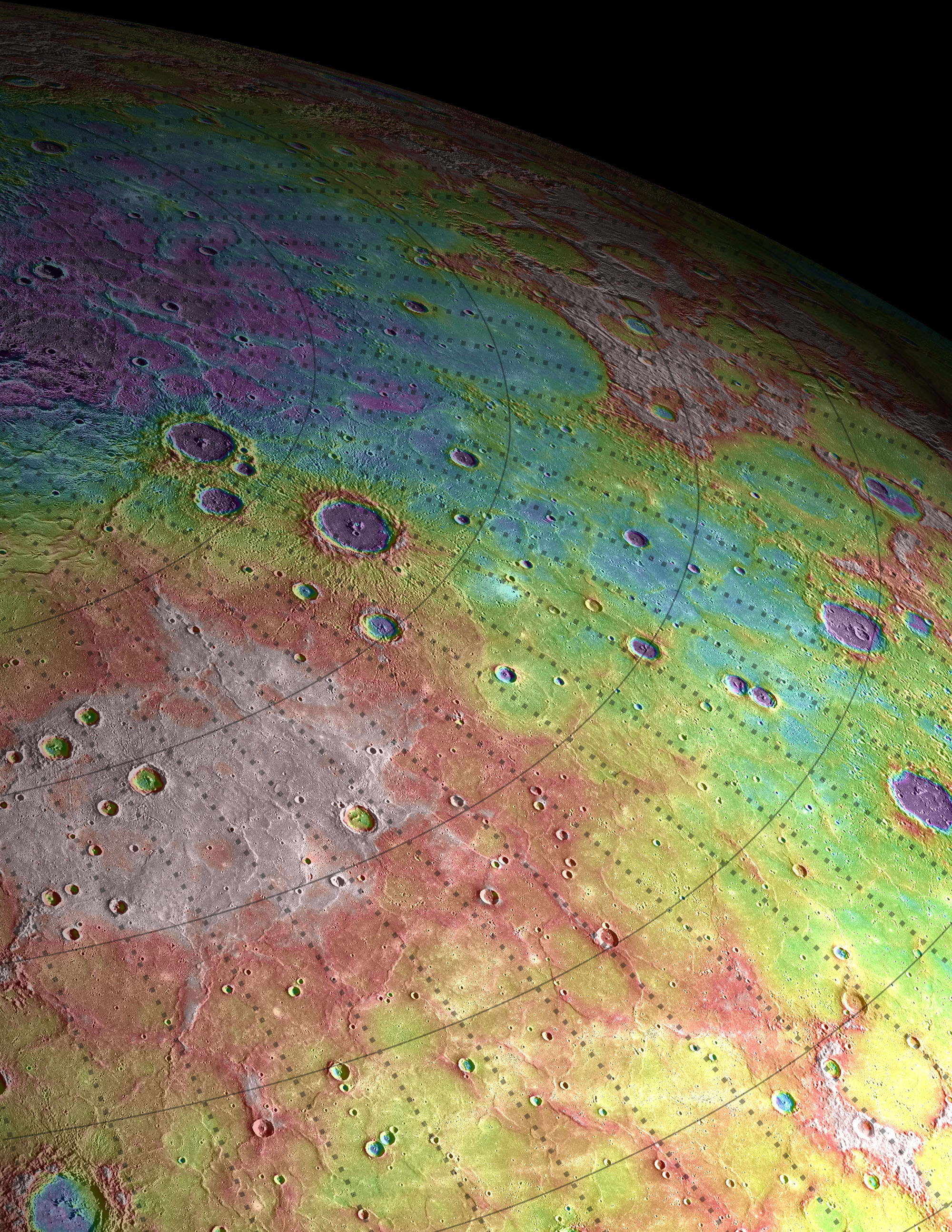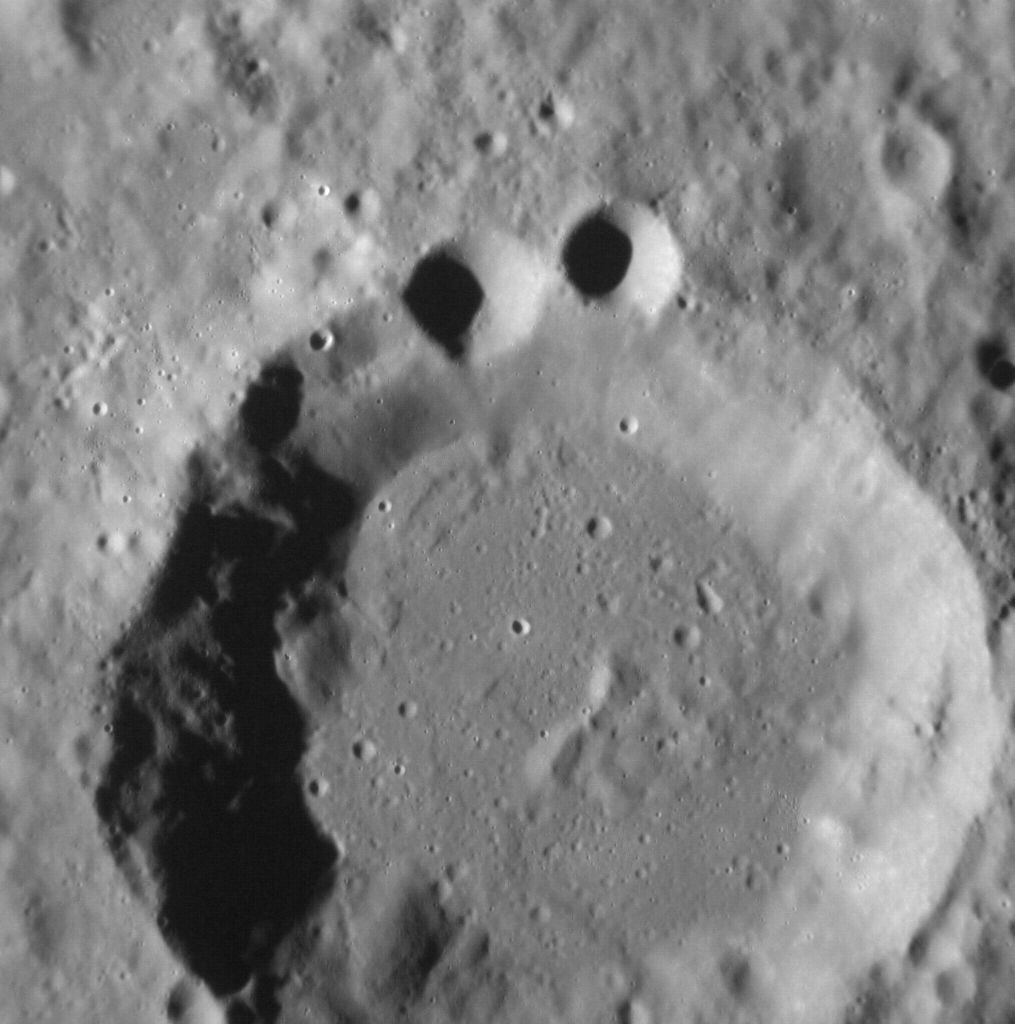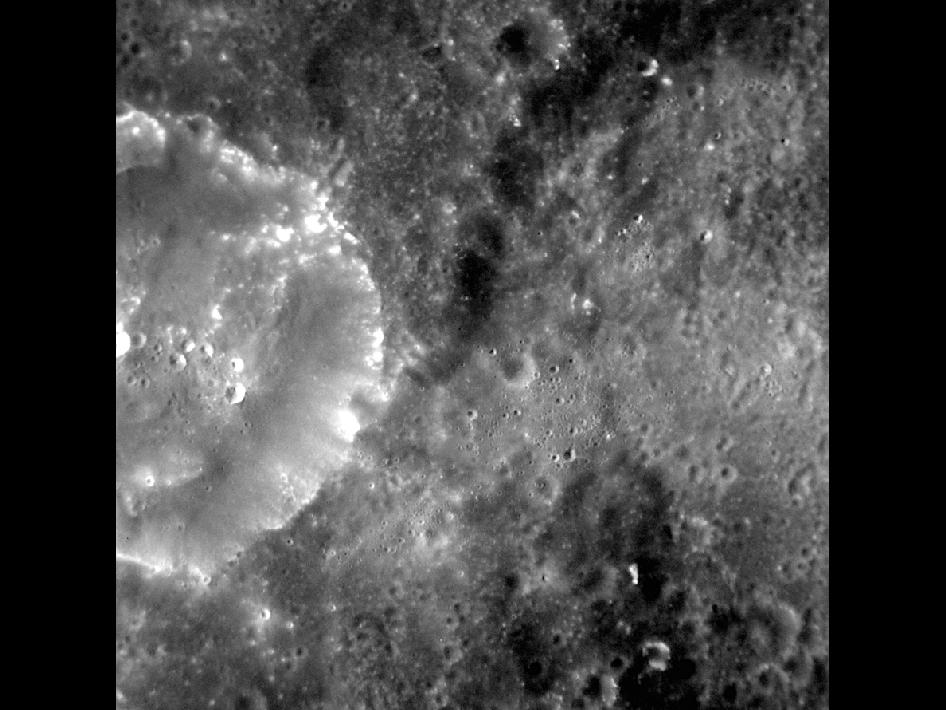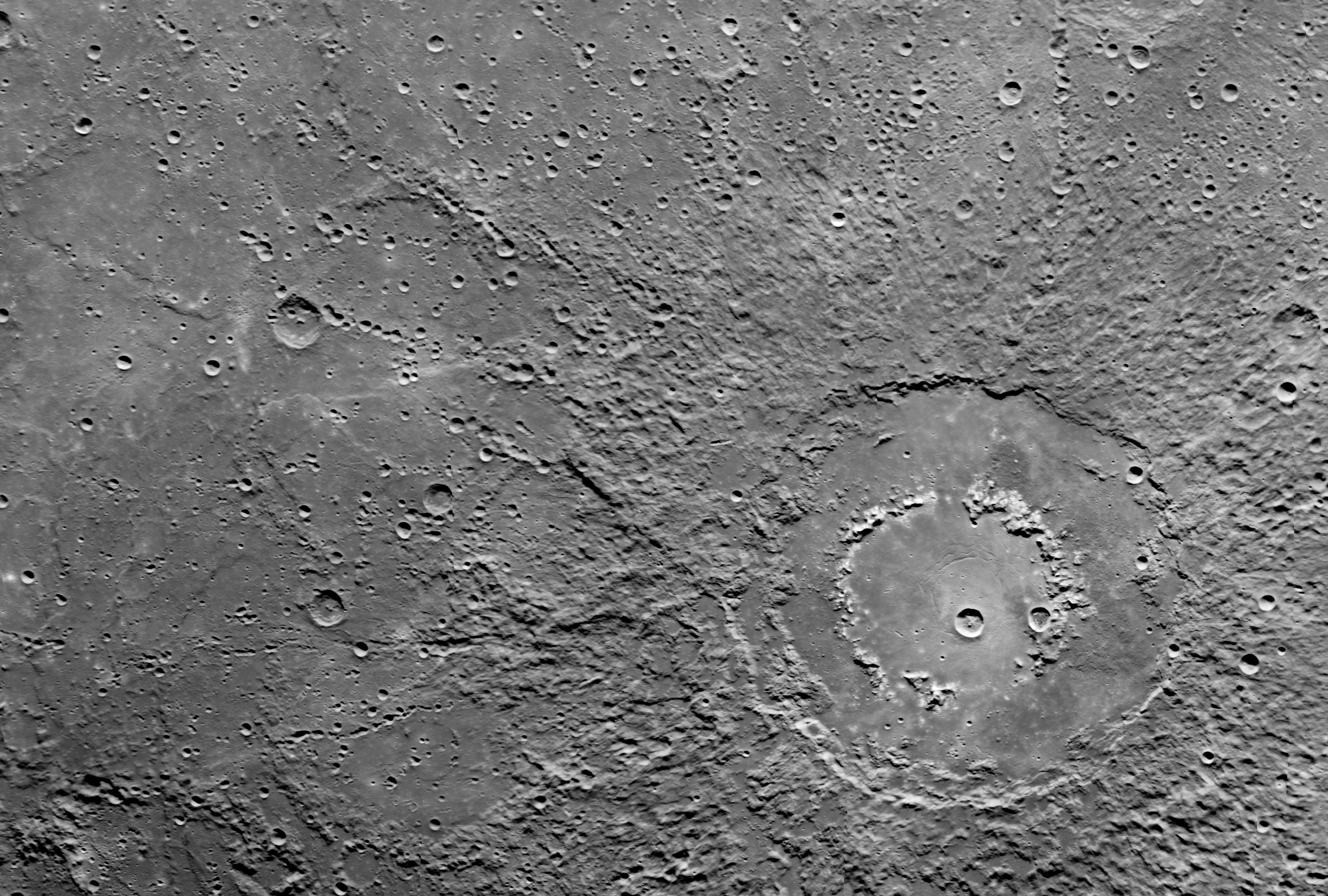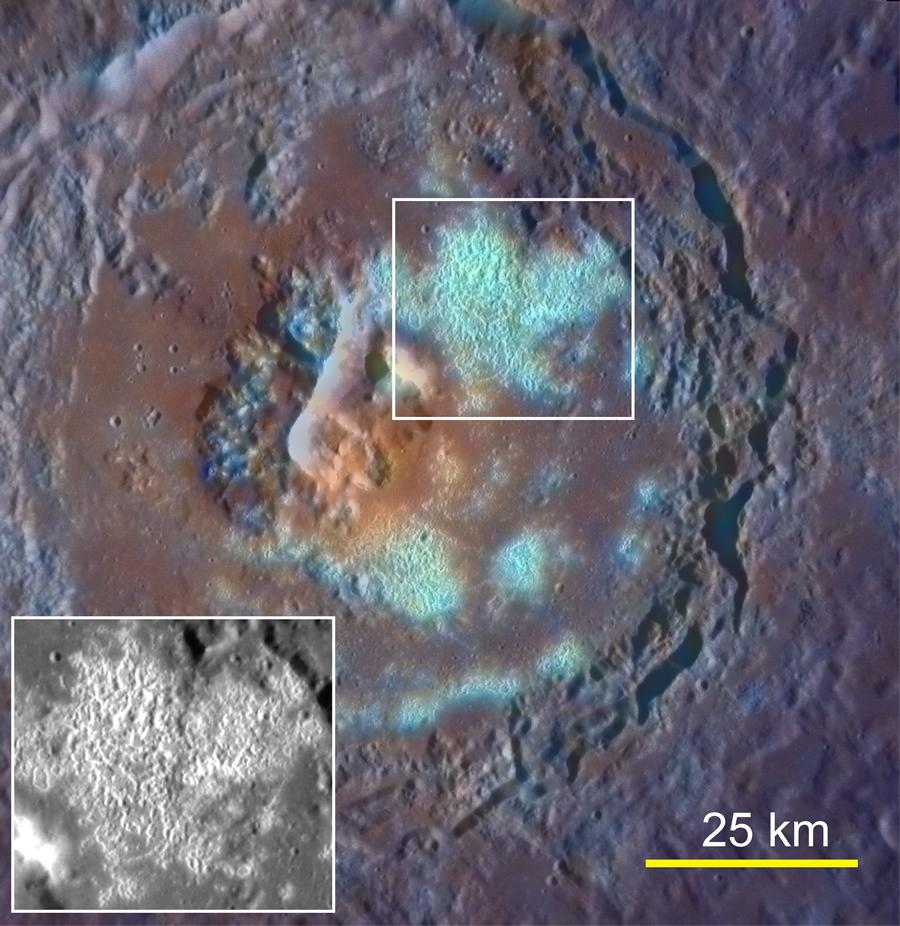Photos of Mercury from NASA's Messenger Spacecraft
Whenever I See Your Smiling Face (on Mercury)
The central peaks of this complex crater have formed in such a way that it resembles a smiling face. This image taken by the MESSENGER spacecraft is oriented so north is toward the bottom. Image released Nov. 9, 2012.
A View of Mercury's High Northern Plains
Perspective view of ancient volcanic plains in the northern high latitudes of Mercury revealed by NASA's Messenger spacecraft. Purple colors are low and white is high, spanning a range of about 2.3 km. Width of area spans about 1200 km. Each line is 5 degrees in latitude and longitude.
Mickey Mouse on Mercury
Craters on Mercury appear to form the image of Mickey Mouse. This scene lies to the northwest of the recently named crater Magritte, in Mercury's south. The image is not map projected; the larger crater actually sits to the north of the two smaller ones. Date acquired: June 3, 2012.
Mercury's Northern Plains
Ancient volcanic plains in the northern high latitudes of Mercury revealed by NASA's Messenger spacecraft. Purple colors are low and white is high, spanning a range of about 1 km. Width of area spans about 250 km.
"Cookie Monster" on Mercury
Craters photographed by MESSENGER spacecraft may appear to resemble a familiar television character, a favorite of children. Image acquired August 29, 2012, and released Oct. 12. [Full Story ]
Beethoven Basin
This elevation map of the Beethoven basin is color-coded to show the height of features on Mercury's surface. Mercury lacks a "sea level", so the zero-point reference elevation is defined to be the mean planetary radius of 2440 km. Blue areas, such as within Bello crater on the floor of Beethoven, have negative elevations. The red and white areas to the southwest are more than 8 km higher than the lowest points in this area. This image was released on Feb. 27, 2012.
First Image of MESSENGER's Extended Mission.
One year ago, MESSENGER became the first spacecraft ever to orbit Mercury. On March 18, 2012, MESSENGER completed its one-year primary mission and began a yearlong extended mission that includes a number of new scientific observation campaigns. The image shown here was acquired yesterday and is the first of MESSENGER's extended mission. Image released on March 18, 2012.
Breaking space news, the latest updates on rocket launches, skywatching events and more!
Deep Impact
Although Mercury is replete with impact craters, it can be difficult to gauge their size in a meaningful way. This oblique image shows an unnamed crater that lies within the Rachmaninoff basin. It is a simple crater, characterized by its bowl-like shape, and lacks the central peak or peak ring of larger, complex craters. Image releases on Feb. 9, 2012.
Mercury May Have Had Volcanoes
This scene was imaged by MESSENGER's Narrow Angle Camera (NAC) on the Mercury Dual Imaging System (MDIS) during the spacecraft's flyby of Mercury on 14 January 2008.
Mercury Crater Covered With Hollows
This photo of a Mercury crater seen by NASA's Messenger spacecraft shows what appears to be a large pit in the center, possibly volcanic vent, from which the orange material erupted. Some odd hollows appear in cyan, a result of their high reflectance and bluish color relative to other parts of the planet. This image was released on Sept. 29, 2011.
